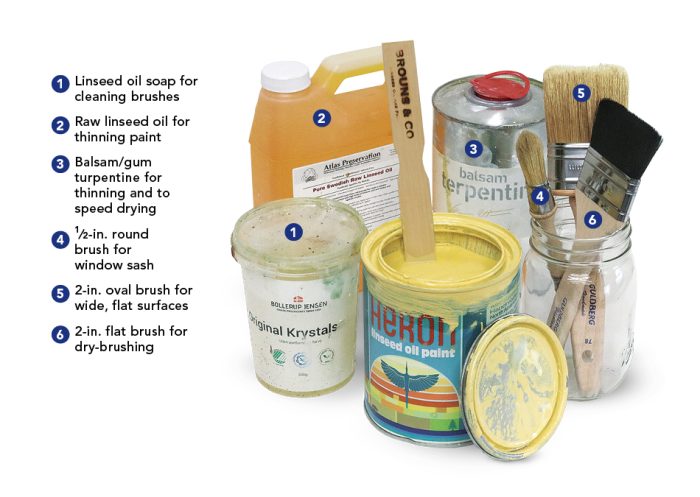Justin Fink, former Fine Hombuilding editor and owner of Fink & Son Carpentry and Woodworking—a historic restoration company in Connecticut—shares what he has learned over the past four years about working with linseed oil paint. He demonstrates how to mix the product ingredients, best practices for getting a quality application that’s sure to endure, and the beauty of easy clean-up with this nontoxic specialty paint. Be sure to read Justin’s article, too, on Resurrecting Linseed Oil Paint.

Weekly Newsletter
Get building science and energy efficiency advice, plus special offers, in your inbox.













2 Comments
"Boiled" linseed oil is a misnomer: it's not heated, but altered with drying agents, usually cobalt and/or manganese salts. Check out some SDS:
* Standard hardware store BLO: https://images.thdstatic.com/catalog/pdfImages/49/4984f6c6-66ea-4997-9f36-3b3a979b3a51.pdf
* Heron paint SDS: https://cdn.shopify.com/s/files/1/0553/8535/8515/files/Heron_Paint_SDS_2024.pdf?v=1724879007
I'm not sure how problematic these are relative to standard paints, but polymerized linseed oil avoids the drying agents entirely (it's used in food-safe finishes like Tried & True).
That's usually the case, but there are exceptions:
https://www.swingpaints.com/product/2147/Circa-1850-Double-Boiled-Linseed-Oil
https://www.triedandtruewoodfinish.com/products/danish-oil/
Log in or create an account to post a comment.
Sign up Log in